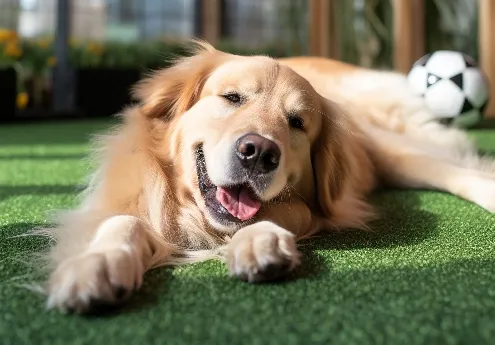
- Afrikaans
- Arabic
- Belarusian
- Bengali
- Czech
- Danish
- Dutch
- English
- Esperanto
- Estonian
- Finnish
- French
- German
- Greek
- Hindi
- Hungarian
- Icelandic
- Indonesian
- irish
- Italian
- Japanese
- kazakh
- Rwandese
- Korean
- Kyrgyz
- Lao
- Latin
- Latvian
- Malay
- Mongolian
- Myanmar
- Norwegian
- Persian
- Polish
- Portuguese
- Romanian
- Russian
- Serbian
- Spanish
- Swedish
- Tagalog
- Tajik
- Thai
- Turkish
- Turkmen
- Ukrainian
- Urdu
- Uighur
- Uzbek
- Vietnamese
Benefits of Using Artificial Turf for Playground Surfaces in Outdoor Spaces
Nov . 06, 2024 13:43 Back to list
Artificial Turf Playground Surfaces A Modern Solution for Safe Play
As playgrounds evolve to meet the needs of modern families and communities, artificial turf surfaces are gaining traction as a safe, durable, and aesthetically pleasing alternative to traditional grass. These synthetic surfaces are designed to provide a comfortable and reliable play environment for children, while addressing some of the common challenges associated with natural grass playgrounds. In this article, we will explore the benefits, maintenance, and considerations of using artificial turf in playgrounds.
One of the most significant advantages of artificial turf is its safety properties. Traditional playground surfaces, particularly natural grass, can be prone to wear and tear. This can lead to exposed dirt and uneven surfaces, increasing the risk of injuries from falls. In contrast, artificial turf offers a consistent, cushioned surface that can help reduce the impact of falls, thereby enhancing the overall safety of play areas. Many artificial turf products are engineered with shock-absorbent layers, providing an additional level of protection for children engaged in various activities, from running and jumping to climbing.
In addition to safety, artificial turf is also incredibly low-maintenance. Natural grass requires regular mowing, watering, weeding, and fertilizing to maintain its appearance and usability. This can be time-consuming and costly for schools and municipalities managing public playgrounds. Artificial turf, on the other hand, eliminates these ongoing maintenance concerns. It does not require mowing, which saves both time and resources. Furthermore, it stays green and vibrant year-round, ensuring that playgrounds look inviting regardless of the season.
Durability is another crucial factor in the growing popularity of artificial turf. Natural grass can suffer significantly from heavy foot traffic, especially in high-use areas such as playgrounds. This wear can lead to muddy patches, bare spots, and unsightly conditions that are not only unappealing but can also contribute to safety hazards. Artificial turf is designed to withstand high levels of use without suffering from degradation. It can maintain its appearance and functionality for many years with proper installation and care.
artificial turf playground surfaces

Environmentally, artificial turf presents a mixed bag of considerations. On one hand, it eliminates the need for chemical fertilizers and pesticides, which can be harmful to local ecosystems. It also conserves water, as synthetic surfaces require no irrigation. However, the production and disposal of artificial turf materials can have environmental impacts. It is essential for communities to consider sustainable options, such as turf made from recycled materials or those designed for easy recycling at the end of their lifespan.
While the benefits of artificial turf playground surfaces are substantial, it is also crucial to consider potential drawbacks. One concern is the heat retention of synthetic materials, which can sometimes result in higher surface temperatures, particularly in sunny climates. This can make play areas less comfortable during hot weather and might necessitate the installation of shade structures to protect children from overheating.
Moreover, some parents may express concerns over the use of rubber infill materials commonly found in artificial turf systems, which are often made from recycled tires. Ensuring the safety and health of children is paramount, and communities should seek synthetic turf products that are free from harmful chemicals and meet safety certifications.
In conclusion, artificial turf playground surfaces offer a modern solution to the challenges of traditional grass play areas. With enhanced safety, low maintenance requirements, and impressive durability, they provide an attractive option for communities looking to create inviting and functional play environments for children. However, careful consideration of environmental impacts and safety concerns is essential in making informed decisions about installation. Ultimately, the right artificial turf can provide a safe, enjoyable, and sustainable space for children to play, learn, and grow.
-
The Benefits of Artificial Turf for Indoors
NewsJul.15,2025
-
How Artificial Grass Suppliers Ensure Quality Products
NewsJul.15,2025
-
Artificial Grass and Pets: A Space for Relaxation
NewsJul.08,2025
-
Balcony & Outdoor Decoration with Artificial Grass
NewsJul.08,2025
-
Best Indoor Artificial Grass for Home
NewsJul.07,2025
-
Best Pet Turf for Dogs: Safe & Durable Artificial Grass Options
NewsJul.07,2025
Products categories









